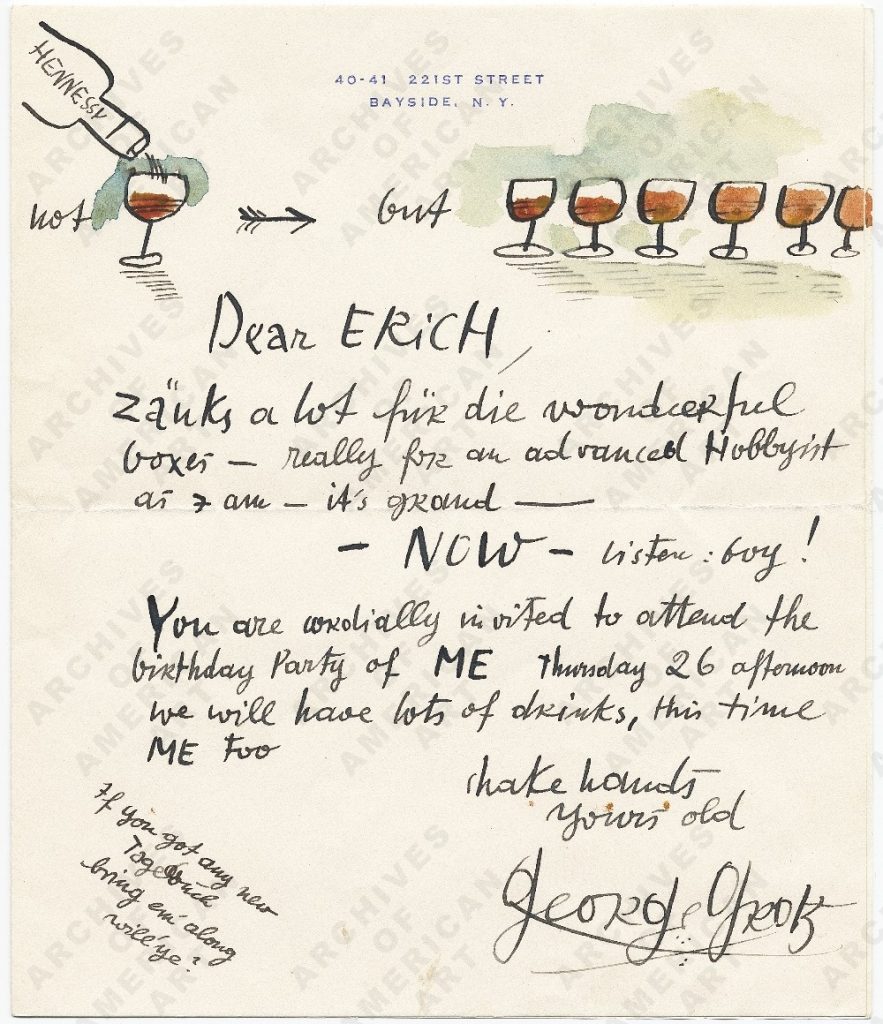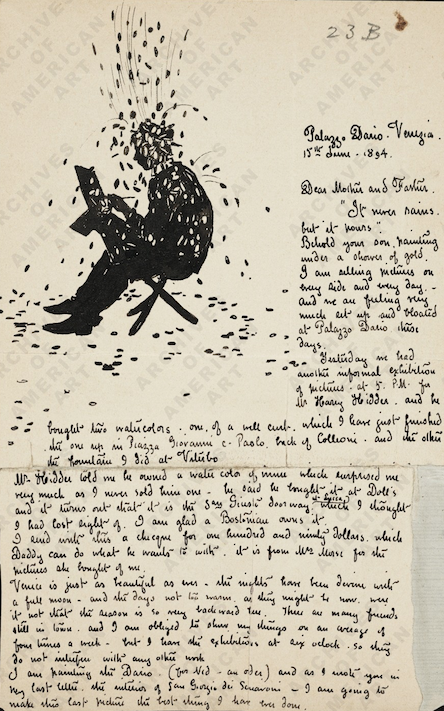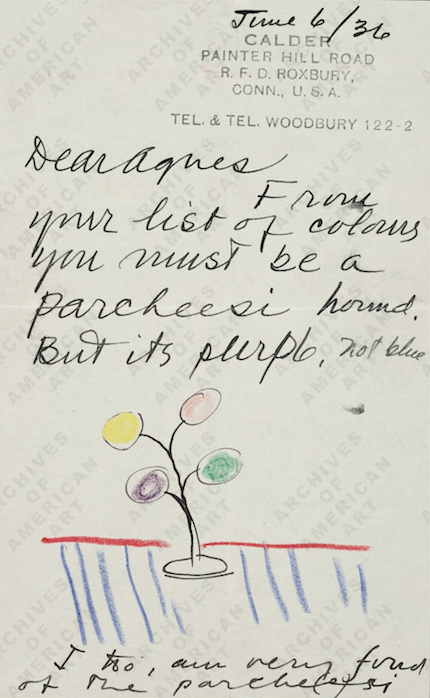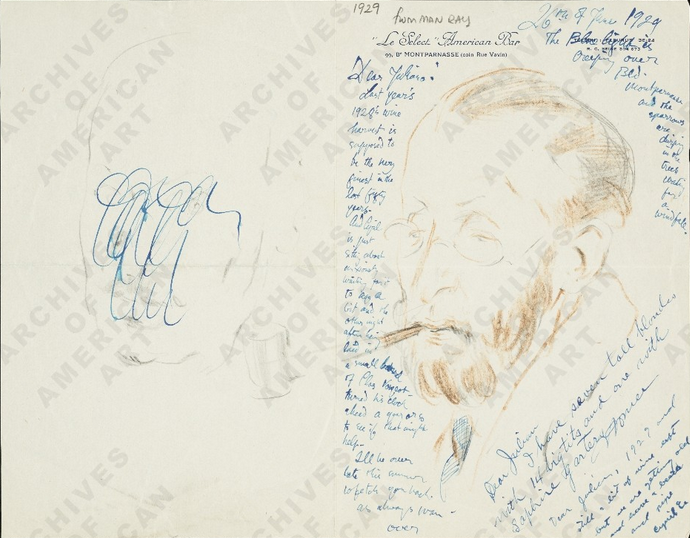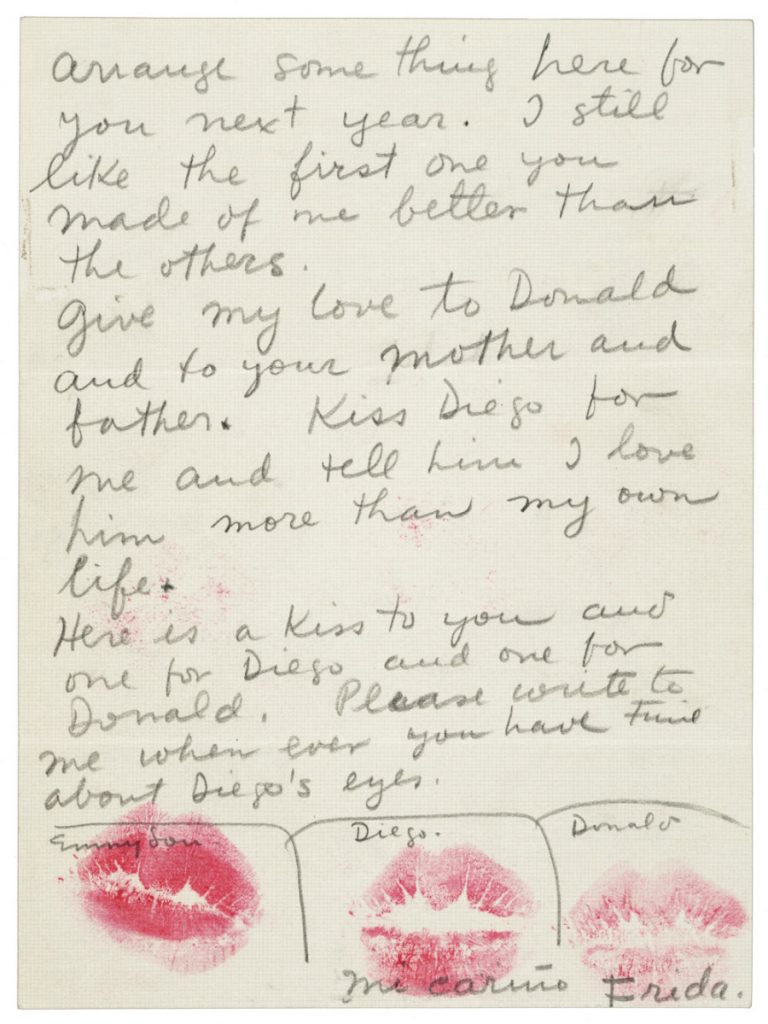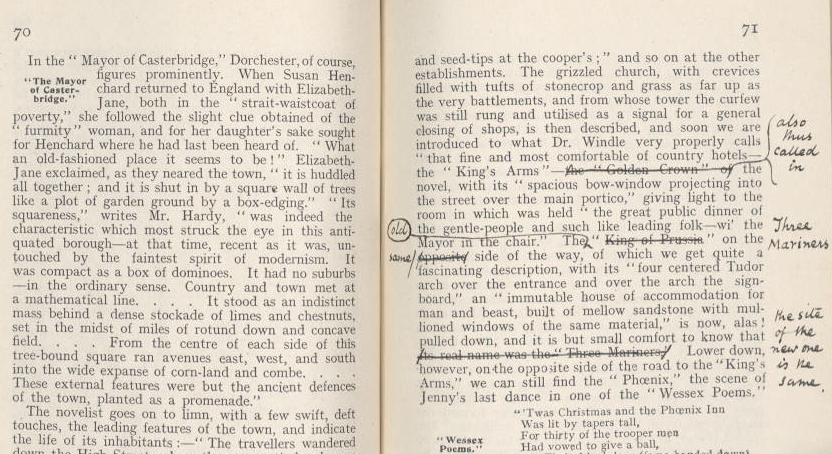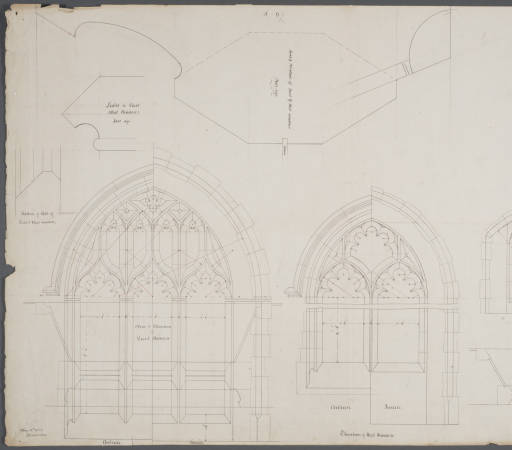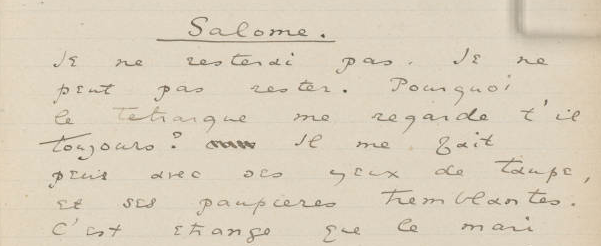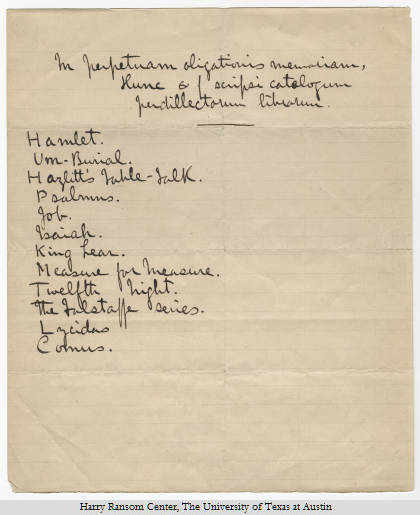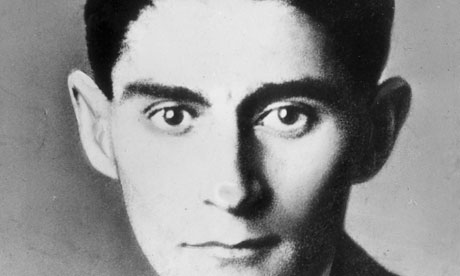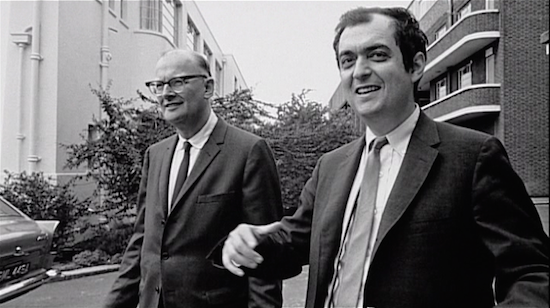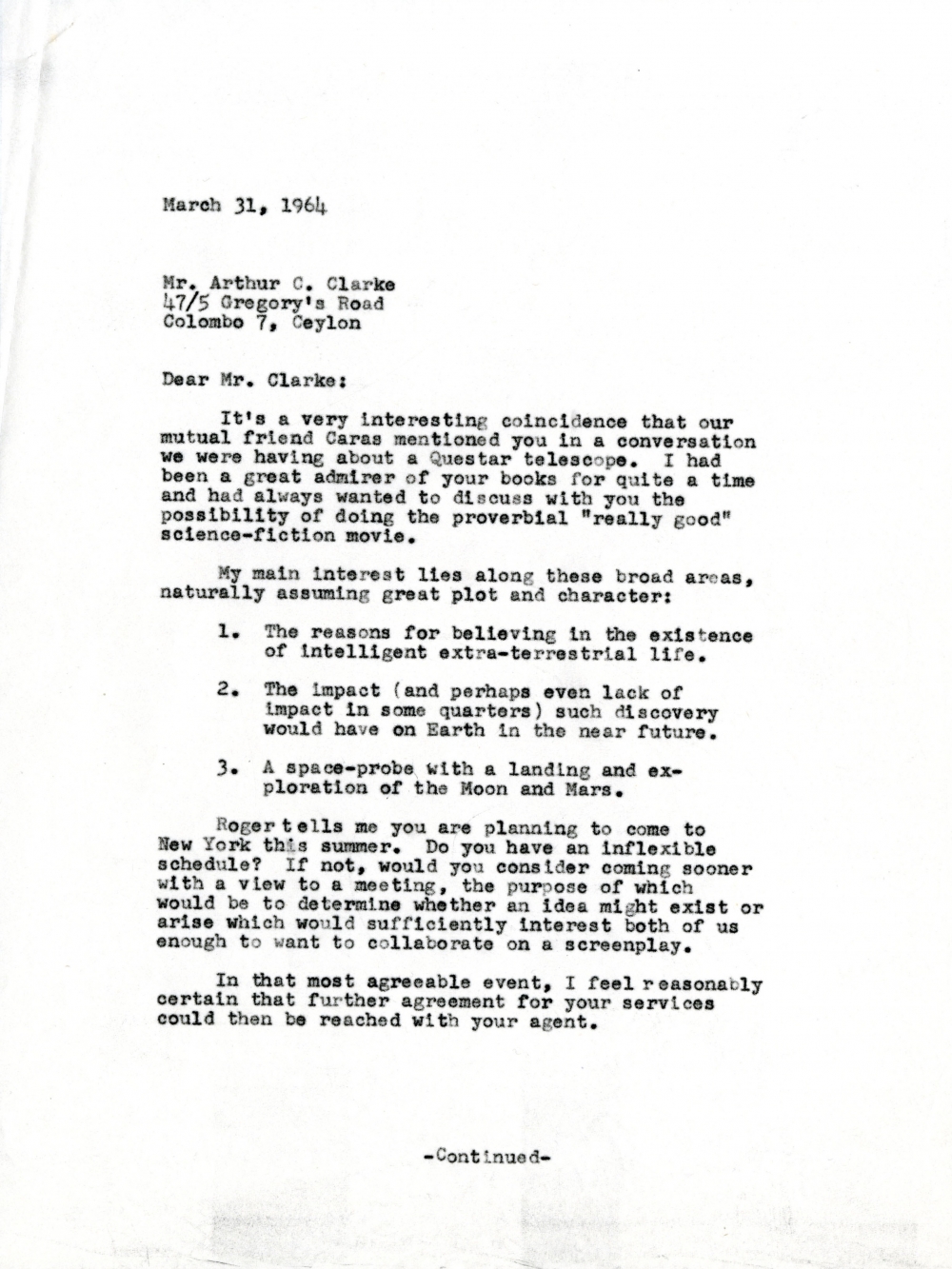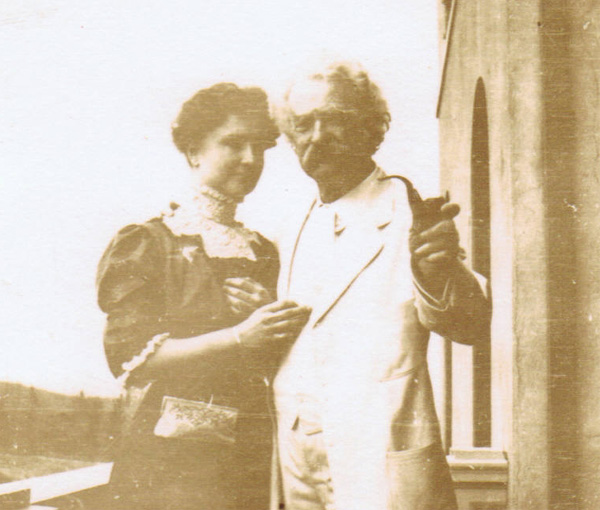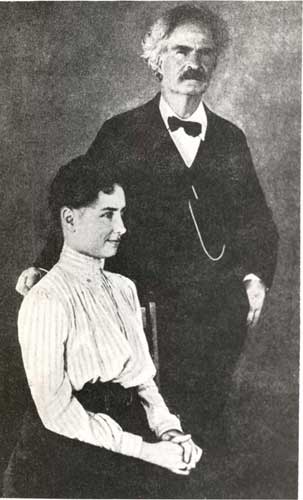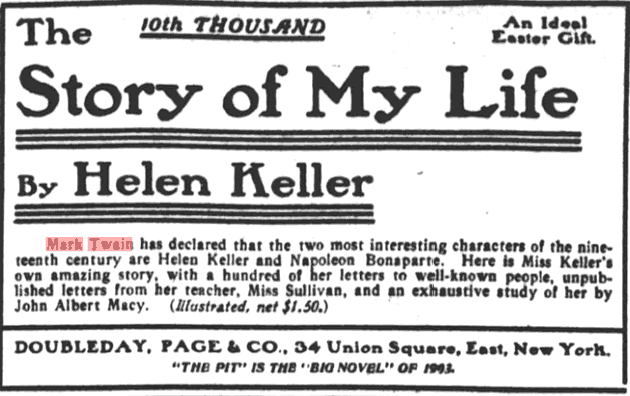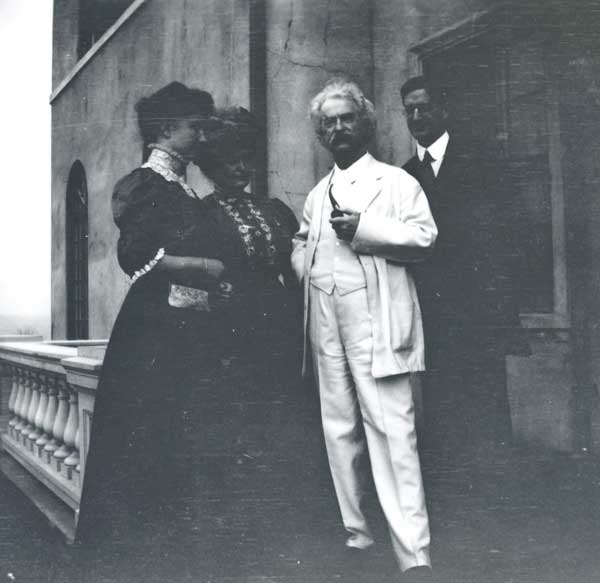Eight years ago—that’s something like five decades in Internet time—the Smithsonian held an exhibition, “More than Words: Illustrated Letters from the Smithsonian’s Archives of American Art,” which featured a curated selection of 178 hand-illustrated letters, love notes, driving directions, and jottings of current events, from various artists. The selections can still be found online, even though Liza Kirwin’s selections for the exhibit can now also be found in an accompanying book.
The illustrated letters make for humanizing insights into the private world of artists that we usually only experience through their work.
The 1945 letter from George Grosz to Erich S. Herrmann (above) is to invite his friend (and art dealer) to his birthday party, promising not just one glass of Hennessy, but six (and more). “Listen: boy!” he declares. “You are cordially invited to attend the birthday party of ME.” This was when Grosz was in his 50s and living in Huntington, New York. It should be noted that Grosz met his end falling down a flight of stairs while drunk, but the man knew how to party.
Joseph Lindon Smith was an American illustrator best known for being the artist who traveled to Egypt and documented the excavations at Giza and the Valley of the Kings, very faithful in their representation. But in 1894, this letter finds Smith, 31 years old, living in Paris, trying to make a go of it as an artist, and having enough success to tell his parents: “Behold your son painting under a shower of gold,” he writes. Check out that handwriting: it’s beautiful.
Sculptor Alexander Calder wrote this note to Vassar colleague and friend Agnes Rindge Claflin in 1936, continuing some conversation they were having about color, and noting her choices mark her as a “Parcheesi hound,” and adding that he’s a fan of the game too. The little illustration, which is straight Calder, is cute too. Claflin would later go on to narrate one of MOMA’s first films to accompany an exhibit, Herbert Matter’s 1944 film on Calder, Sculpture and Constructions.
This Man Ray letter to painter Julian E. Levi looks like it has been worried over or recycled—-“Dear Julian” appears several times on the stationery from Le Select American Bar in Montparnasse. It’s a bit difficult to make out all his writing: he starts mentioning “Last year’s 1928 wine harvest is supposed to be the very finest in the last fifty years” at the beginning, but I’m more fascinated with the bottom right: “I have seven tall blondes with 14 big tits and one with sapphire garters.”
Finally, we close out with a letter Frida Kahlo sent to her friend Emmy Lou Packard in 1940, where she thanked Packard for taking care of Diego during an illness. The letter gets sealed, Priscilla Frank notes at HuffPo, with three lipstick kisses — “one for Diego, one for Emmy Lou, and one for her son.”
There’s plenty more illustrated letters to explore at the Smithsonian site and in Kirwin’s handsome book, featuring artists well known and obscure, but all who knew how to compose a good letter.
Related Content:
Franz Kafka’s Kafkaesque Love Letters
Six Postcards From Famous Writers: Hemingway, Kafka, Kerouac & More
James Joyce’s “Dirty Letters” to His Wife (1909)
Read Rejection Letters Sent to Three Famous Artists: Sylvia Plath, Kurt Vonnegut & Andy Warhol
Ted Mills is a freelance writer on the arts who currently hosts the FunkZone Podcast. You can also follow him on Twitter at @tedmills, read his other arts writing at tedmills.com and/or watch his films here.
